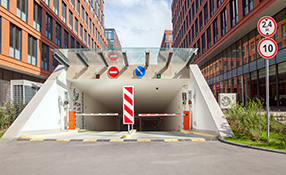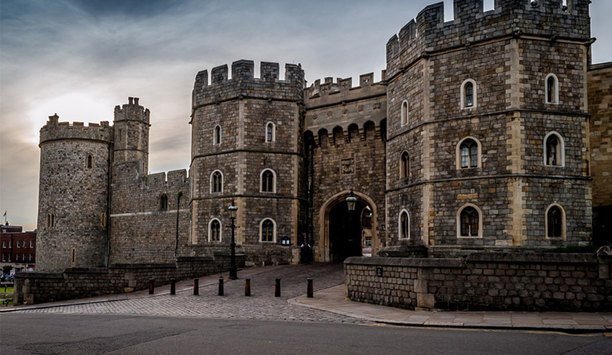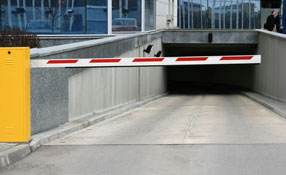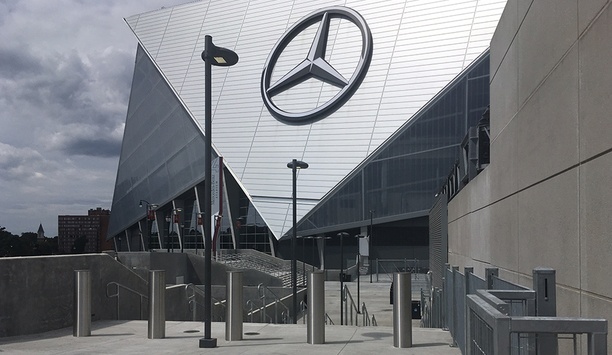 |
When specifying the vehicle access control system you need to stop a truck-bomber, errant driver or vehicle not authorised to enter your facility, you have to decide among bollards, barriers or barricades. Once you have decided the type you will use, you then have to pick the model to use. Finally, you then need to select the type of power unit you are going to deploy. And, going green is important to many companies and organisations worldwide who are trying to minimise their carbon footprints. Greg Hamm, Vice President, Sales and Marketing at Delta Scientific informs that the two most popular choices are the hydraulic and electro-mechanical power units. How can you decide which to use? The following should help.
Advantages and disadvantages of Hydraulic
The hydraulic controller is the workhorse of the industry. This unit is typically mounted remotely from the barrier(s) and attached to them by hoses or steel pipes buried underground. It is powered from a local single or three-phase power source.
A big advantage is that, while hydraulic lines are buried, the motors are kept above the ground (“above grade” in contractor parlance). Therefore, there are less environmental problems than with the electro-mechanical motor which is placed below the ground. With a hydraulic controller, there are no problems of a motor sitting in a pool of water or swallowed by mud.
The hydraulic power unit is stronger. The forces generated are in the range of 20,000 to 25,000 pounds. An industrial grade electric motor drives the hydraulic gear pump to produce the hydraulic power unit system pressure. If a normal-sized car ends up on top of the barrier while in operation, the barrier will continue rise and pick up the vehicle. This is a very effective deterrent at times when vehicles decide to run the barrier or tailgate the vehicle in front of them.
Hydraulic controllers are very reliable. There are very few maintenance issues when installed properly. The biggest complaint about them comes from environmentalists and those organisations with a “green” initiative. However, petroleum-based oil does not need to be a concern. Instead, customers can simply substitute bio-degradable oils, usually derived from cooking oils. Over fifty hydraulic barrier, barricade, bollard and crash gate designs can be run manually or on FDA-approved vegetable oils.
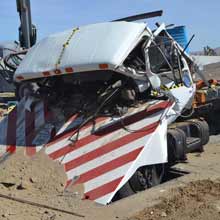 |
| Electro-mechanical units can handle all temperatures without problems |
Cold can be a problem with hydraulic power units in locales with extremely frigid weather. The oil can become thick. However, this is easily solved at the time of installation by putting in heaters to maintain proper oil viscosity. Depending on the hydraulic power unit size and rating, such heaters will range from 60 to 500 watts @ 120/240 volts for the oil reservoirs. Of course, the hydraulic hoses to the barriers should be run below the frost line where temperatures are a relatively constant 45 to 55ºF. If desired, the ducts carrying these hoses can be heat traced at time of installation.
Barrier installations in areas where the temperatures are frequently above 100ºF have their hydraulic power units located in temperature controlled equipment rooms or equipped with oil coolers.
Advantages and disadvantage of Electro-Mechanical
There are some unique locations where the application may not lend itself to hydraulic units. As mentioned, for environmental reasons, some locations won’t allow oil or wish to use the bio-degradable substitution. In other cases, the application simply demands a simpler, less complex solution. These locations use the electro-mechanical option.
With an electro-mechanical unit, the customer can produce variable speeds, having more control over the rapidity of how quickly the ramp or bollard rises. For instance, many users like to initially raise the ramp or bollard quickly and slow down near the end, which is easier on the system. The electrical-mechanical unit is also quieter than the hydraulic alternative. Most security professionals find the electro-mechanical unit minimally easier to maintain, although that slight difference is rarely given for choosing one over the other. Electro-mechanical units also handle all temperatures without problems.
The biggest negative for electro-mechanical units is that they are buried below ground (below grade). Thus, they can become submersed in water or mud, creating a major maintenance problem. When selecting an electro-mechanical power unit, it is imperative that the contractor create good drainage at the time of installation. Care should be taken to mount the barrier in an area that is not subject to flooding. Additionally, the roadway should be crowned in the area of the barrier to prevent standing water from draining into the barrier foundation frame.
Electro-mechanical units require at least 220v/single phase power and draw approximately 20 amps. This is typically 12-15 more amps of power than what the hydraulic power units draw, bringing into question whether they are "greener" than hydraulic units.
Ask questions
When planning on installing a bollard, barrier or barricade, don’t treat the choice of your power unit lightly. If you don’t understand something, ask again. And, always work with a contractor experienced with this type of equipment. Your manufacturer should have suggestions.


